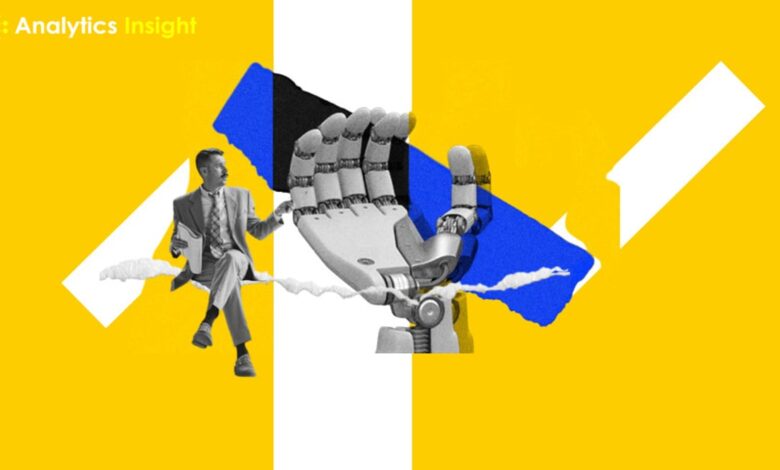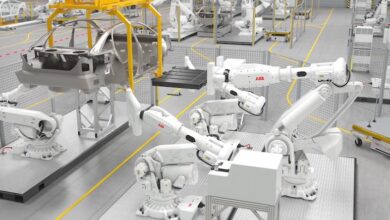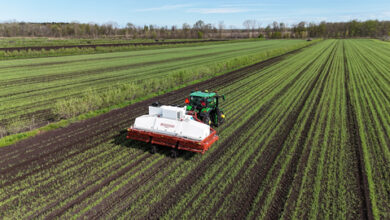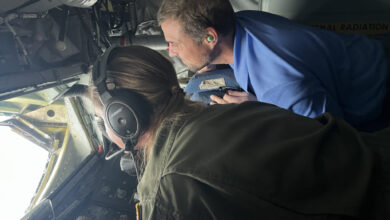Emerging Robotics Trends: Future of Automation

New approaches in robotics are addressing the growing demand for industrialization, further usage of technology, and environmental conservation. AMRs and AGVs are used in the warehouses to drive autonomous material handling. While cobots are primarily involved in the picking and place operation function of manufacturing with the help of human collaborators. Drones, humanoid robots, robotic cybersecurity, and other robotics-related projects are also areas of significant interest and investment for the industry. An overview of robotics trends is given in this article, including everything from the Internet of Things (IoT) to cognitive robotics and robots as a service.
Let us discuss the emerging robotics trends and the future of automation.
Top 5 Robotics Trends in 2024
1. Autonomous Mobile Robots
Employees who perform their duties within production zones are prone to risks ranging from controlled machinery, congested places and toxic substances. Current and potential applications of Ambler’s technology include a wide range of industrial operations that are part of the initial activities of startups and scale-ups. The current robotics technology used in the technique enables the units to have vision, artificial intelligence, and sensors to detect the environment within the area of operation to navigate. To avoid further usage of inventories some examples of WM AMRs are equipped with scanners so that they would be able to identify inventory amounts and perform material transfers.
To speed up processes and spare laborers from dragging bulky carts, AMRs are also used in factories to carry parts and subassemblies over considerable distances. They are also employed in activity automatization to polish hospital and shop floors for example. AMRs are also deployed in the hospitality industry to transport foods and other materials to the hotel and restaurant or for cleaning purposes. Temporary delivery robots for LMDs are also becoming more common because they can efficiently and safely deliver packages.
Bottobo Robotics produces AMRs that work together:
Bottobo Robotics, a Turkish firm, creates cooperative AMRs. Without altering the infrastructure of the warehouse, they automate material transportation. To detect impediments and maneuver on their own, the AMRs use depth cameras, the Internet of Things, and 2D and 3D light detection. Also, they possess a Warehouse Intelligence System, which always provides information concerning the data of a warehouse. Since it helps the managers to determine the most efficient way of transporting goods and also helps warehouse employees to work smarter, this helps to enhance productivity in the warehouses.
Self-driving delivery robots by OttonomyIO:
Delivery robots are offered by OttonomyIO, a US-based firm. In busy environments, they navigate autonomously and precisely by using behavior-based contextual navigation. Businesses can now offer contactless food, drink, grocery, and other item delivery to curbside, last mile, and indoor locations.
In this way, the firm has effectively reduced carbon outputs and also provided solutions to the problems of staff scarcity in the retail and restaurant industries.
2. Intelligent Robotics
In the present generation, robots have been enhanced with Artificial Intelligence in a way that they can perform jobs and take advantage of real-time data. Start-ups use machine learning, computer vision, reinforcement learning, and dynamics modeling as well as other benefits for this. In addition, the robots are adapting themselves to get better accuracy and better performance with huge data sets and real data. As a result, they can travel independently by rapidly identifying items and having a greater understanding of real-time data.
Robots that are controlled with Artificial Intelligence and which are seen more and more in the manufacturing industry to perform operations that would otherwise take too much time such as quality inspection, 3D printing, and part selection. Robots used in retail stores or hotels use NLP-processed robots than can enhance customer interactions.
Sereact makes AI-driven picking possible:
Sereact, a German firm, creates clever software for robotic picking called Capto. It makes use of AI to expedite the selection of new items and optimize the selection of previously known ones. To adjust the grasping performance of robots according to needs, the software continuously learns from operations. By doing this, firms may increase floor productivity and release operators from monotonous jobs.
Smart Disinfection Robots are created by Loop Robots:
Innovations of the SAM smart robot are in the process of being adopted into the decontamination of Dutch business Loop Robots’ hospitals. This system can move around the hospital by itself to disinfect the floors, walls, ceilings, or the air in patient rooms. As the robot employs fewer chemicals in disinfecting surfaces, the chance of acquiring diseases caused by bacteria found in the health facilities is reduced.
3. Cobots
In contrast with pure industrial robots, collaborative robots, also known as cobots, are equipped with elaborate sensors and algorithms that ensure secure functioning near people. These are mostly used in the form of end-of-arm tooling abbreviated as EOAT and are employed for tasks such as screw drilling as well as component welding. It is these robots that transport substances that are a danger to human beings and may cause mishaps by lifting them such as plastics and metals.
Also, cobots work side by side with current employees in carrying out tasks, hence, do not disrupt production lines and thus, ease adoption. This accelerates the adoption of technologies within different sectors to boost productivity and protect workers. Also, enhancements in 5G and HPC will enhance human-robot interactions, which adduces safety to human operators during operations with robots.
US-based Rapid Robotics builds End-of-Arm Tooling (EOAT):
Tasks such as injection molding, heat staking, ultrasonic welding, and pad printing can simply be undertaken by this versatile six-axis cobot. The cobot is suitable for the production line that requires a short time per process because the cobot changes its task from one process to another. These attributes can help producers in enhancing the quality and productivity of products in the markets.
Safety helps in the process of evaluation of CO BOT safety:
Safety analysis for cobots is available courtesy of South Korean firm Safetics. Self-driving cars are another application of artificial intelligence, which identifies the safety of the robots’ clash while they share working environments with human beings. By easing independence, it allows the formation of safe-certified robots to perform tasks without the use of sensors or safety barriers. This cuts costs of production and at the same time increasing on the safety of the workforce.
4. Robotics as a Service
Integrating & deploying robots is costly and time-intensive and requires considerable resources. These issues are the reasons why a great number of companies, especially the ones that are small or medium-sized, cannot integrate robotic systems into their activities. Even so, Robotic Automation as a Service, or RaaS presents a subscription-based, robotics-leveraging business model.
The current startup’s approach means that it could be easy to hire robots to do certain jobs on demand, in a manner that possibly is easy to scale up or scale down depending on prevailing market conditions. Additionally, by using real-time data to enhance performance, robotic operations through cloud environments enable providers to quickly modify current configurations.
Agriculture Robots as a Service is offered by Agroverse:
A Greek firm called Agroverse provides agricultural robots as a service. The autonomous robot developed by the business replaces expensive manual labor in farms by automating weeding and spraying. Consequently, this enables farmers to reduce the initial expenses linked to the deployment of robots in agricultural settings.
Formic is a service provider in Industrial Automation Robots:
Industrial automation robots as a service is a market opportunity found in US start-up Formic. Another aspect is the creation of robots in cooperation with robotics manufacturers and offering companies subscriptions to these specifically developed robots. This allows producers to employ robotics in welding, inspection, material management, and tending among other functions. Furthermore, Formic assists them in avoiding time-consuming, high-risk/ high return, or complex processes and Expanding activities with greater ease.
5. Robotics in Cybersecurity
Cited to be facing risks is Robotics because of IoT and the enhanced need for communication. In addition, assembly lines, space exploration, military, and medical applications all require some level of robotic security to protect the robot from unauthorized operation. Robotic cybersecurity is the use of robotics protection and security from cyber criminals to safeguard endpoints and connectivity stacks from data breaches and asset outages. Business ventures incorporate AI or machine learning to incorporate constant observation of the network and its gadgets for this reason. These technologies assist organizations in preventing outages or modifications of services and losses as organizations are equipped with swift means of detecting threats to security and tracking activities being perpetrated by devices.
Introduced by Alias Robotics, Security for Robot Endpoints:
The Robot Immune System or RIS is an EDPM solution for protecting industrial robots offered by Alias Robotics, a firm based in Spain. It protects robots and their parts from malicious programs and codes. RIS also offers antivirus, data encryption, DLP, and anti-ransomware among others for various risks. Moreover, it offers a safe drill platform for analyzing the cyberattack or a robot malfunction in detail. This makes it possible for those who design and utilize robots to ensure their safety in trading and manufacturing amenities.
DroneSec provides Security Drones:
DroneSec, an Australian firm, originated an anti-drone cybersecurity software known as DroneSec Notify. It keeps an eye on fleets to give real-time drone visibility. Additionally, by examining the drone data flow and who it is shared with, the software allows for an extra degree of data protection. It also provides in-the-moment notifications of any questionable activity. To prevent the release of confidential information, security professionals use this data to either ground the drone or move it to a safer area of the sky.
Conclusion:
Robotics is booming with advancements in AI and computing. New robots are intelligent, mobile, and work with people. These robotics trends can impact manufacturing, healthcare, and more. Robots are becoming affordable and play a bigger role in our lives. Safety and cybersecurity remain challenges, but robotics offers a bright future.


